Off-Grid Rainwater Harvesting: Everything You Need to Know
Building your own off-grid rainwater system is a smart move for anyone looking to live more sustainably and cut ties with city utilities. It might sound like a big project, but with the right plan, it’s totally doable. This guide will walk you through everything you need to know, from figuring out how much water you actually use to picking the best parts for your setup. We’ll cover how to build off grid rainwater system and make sure you have clean, reliable water no matter what.
Key Takeaways
- Figure out your daily water needs before you start building.
- Rainwater collection is a great way to get water; make sure to check local rainfall.
- Storage tanks, big or small, are key for keeping enough water on hand.
- Always filter and treat collected water to make it safe for use.
- Gravity or pumps can get water where it needs to go in your home.
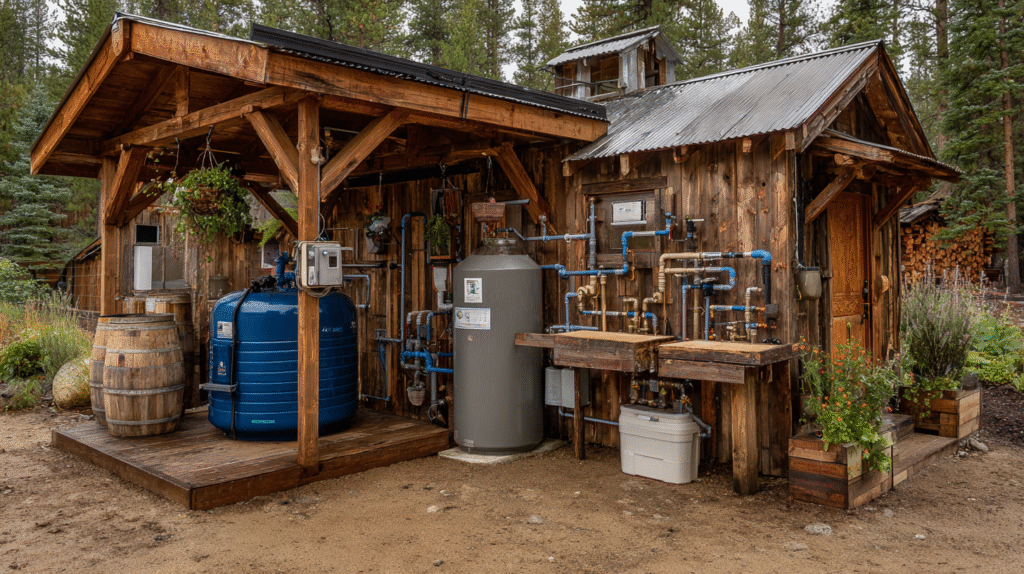
Understanding Off-Grid Water Systems
Off-grid water systems are all about independence. They let you control your water source, treatment, and distribution, which is pretty cool. It’s not always easy, but the freedom and sustainability are worth it for many people. Let’s get into the details.
Components of an Off-Grid System
An off-grid water system is like a mini municipal water system, but it’s all yours! It has three main parts that work together to get water to your tap.
- Water Source: This is where your water comes from. Think rainwater, wells, or even natural springs. The source you pick will affect how reliable your system is.
- Water Treatment: Raw water isn’t always safe to drink. This part cleans the water by removing dirt, bacteria, and other stuff you don’t want. Filtration methods are key here.
- Water Distribution: Once the water is clean, it needs to get to your house. This can happen with pumps, gravity, or a mix of both.
Benefits of Off-Grid Water
Why go off-grid with your water? There are a bunch of good reasons. For starters, you’re not tied to the city’s water supply, which means no more water bills! Plus, you have more control over the water quality. Here are some other perks:
- Cost Savings: Over time, you can save a lot of money by not paying for water.
- Environmental Impact: Off-grid systems can be more sustainable, especially if you’re using rainwater.
- Independence: You’re in charge of your water supply, which is a big deal if you value self-sufficiency.
Going off-grid with water isn’t just about saving money or being green. It’s about taking control of a resource that’s essential for life. It’s a way to be more responsible and connected to the environment.
Calculating Your Water Needs
Before you build anything, you need to figure out how much water you actually use. This will help you choose the right size tank, pump, and other equipment. Here’s how to estimate your water needs:
- Estimate Daily Use: Think about how much water you use for showers, toilets, laundry, and cooking. A rough estimate is around 50-100 gallons per person per day.
- Factor in Seasonal Changes: You might use more water in the summer for gardening or other outdoor activities.
- Plan for Guests: If you often have visitors, you’ll need to account for their water use too.
| Use | Gallons per Day (Estimate) | Notes |
|---|---|---|
| Shower | 20-40 | Depends on showerhead and length |
| Toilet | 3-7 per flush | Varies with toilet type |
| Laundry | 20-40 per load | Front-loaders use less water |
| Cooking/Drinking | 5-10 |
Choosing Your Water Source
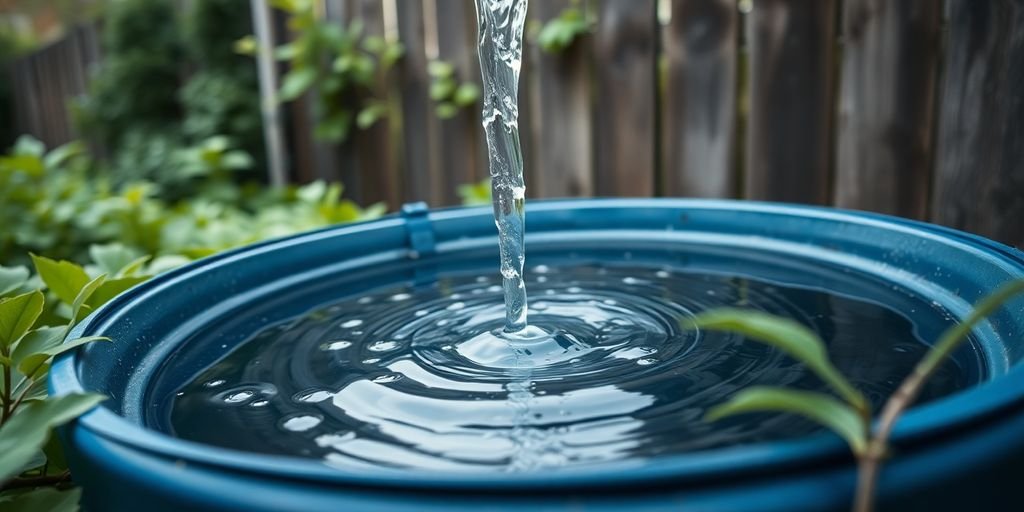
When you’re setting up an off-grid water system, the first big decision is figuring out where your water will come from. It’s not as simple as turning on a tap; you’ve got to consider what’s available in your area, how reliable it is, and how much it’ll cost to get it. Let’s look at some common options.
Rainwater Collection
Rainwater harvesting is a popular choice for off-grid living, and for good reason. It’s often the cleanest and most readily available source of water, especially if you live in an area with regular rainfall. The basic idea is simple: you collect rainwater from your roof and store it in tanks for later use.
You can get fresh, clean water that can be at high flow rates and provide water in excess. However, you’ll need to think about the size of your roof, the amount of rainfall you get, and how much storage capacity you’ll need to get you through dry spells. Also, you’ll need to make sure your roof is made of safe materials that won’t contaminate the water. You’ll also need a reliable filtration system to remove any debris or contaminants that might get into the water.
- Relatively low setup cost compared to drilling a well.
- Environmentally friendly and sustainable.
- Water is naturally soft and good for washing.
Rainwater collection is great, but it’s not a set-it-and-forget-it solution. You need to regularly clean your gutters, inspect your storage tanks, and test your water quality to make sure it’s safe to drink. It’s a bit of work, but it’s worth it for the peace of mind.
Drilling a Well
Wells tap into underground aquifers, offering a dependable water supply. If you’re looking for a more consistent water source, drilling a well might be the way to go. Wells can provide a steady supply of water, even during dry periods. However, there are a few things to keep in mind. First, drilling a well can be expensive, and there’s no guarantee you’ll find water.
Second, the water quality can vary depending on the location, and you might need to invest in a water treatment system to remove contaminants like iron, sulfur, and other unpleasant contaminants. There’s no guarantee you’ll hit water when drilling—but you’re still responsible for the cost. Even if water is found, the recovery rate may not meet your family’s needs. And if you do get water, its quality isn’t guaranteed either. Many wells are high in iron, sulfur, and other unpleasant contaminants.
| Factor | Consideration ### Natural Springs
If you’re lucky enough to have a natural spring on your property, you might have a great option for an off-grid water source. A natural spring occurs when underground water naturally rises to the surface. If the flow is steady year-round, a spring can provide an excellent off-grid water supply.
However, flow rates may drop in late summer and fall, so monitoring is essential before committing to this source. You’ll also need to protect the spring from contamination by animals or debris. If the water source is located higher than your homestead, you can build a gravity fed water system. You might still need to filter and disinfect the water before drinking it, but a natural spring can be a valuable asset for off-grid living.
Off-Grid Water Storage Solutions
Okay, so you’ve figured out where your water is coming from. Awesome! Now, where are you going to put it all? Storage is super important. You need to have enough water on hand to get you through dry spells, and you need to keep it safe from contamination. Let’s look at some options.
Rain Barrels for Small Scale Use
Rain barrels are the classic choice, and honestly, they’re great for getting started. They’re relatively cheap and easy to set up. Think of them as the gateway drug to off-grid water. You can hook them up directly to your gutters and start collecting rainwater right away. The downside? They don’t hold a ton of water. We’re talking maybe 50-100 gallons each, so they’re best for small gardens or supplemental water use. Make sure you get ones that are dark-colored to prevent algae growth, and always use a screen to keep out leaves and bugs. I’ve seen people get really creative with painting them, too, so they don’t look so industrial. You can find rain barrel options at most hardware stores.
Large Capacity Storage Tanks
If you need more water, like, a lot more water, you’re going to want to look at large capacity storage tanks. These things can hold hundreds or even thousands of gallons. They’re usually made of plastic or fiberglass, and they come in all shapes and sizes. I’ve seen people bury them underground, put them on platforms, or even build sheds around them. The key is to make sure they’re properly supported and protected from the elements. Think about how much water you use in a week, then multiply that by how long the longest dry period usually lasts in your area. That’s a good starting point for figuring out what size tank you need. Here are some things to consider:
- Material: Plastic is cheaper, but fiberglass is more durable.
- Size: Bigger is better, but also more expensive.
- Location: Above ground is easier to access, but underground stays cooler.
Cisterns for Long-Term Supply
Cisterns are like the granddaddy of water storage. They’ve been around for centuries, and they’re still a great option for long-term, reliable water storage. They can be built above ground or below ground, and they can hold a massive amount of water. We’re talking thousands of gallons, easily.
The downside is that they’re more expensive and complicated to install than rain barrels or storage tanks. But if you’re serious about off-grid living, a cistern is definitely worth considering. You can even build your own cistern if you’re feeling ambitious. Just make sure you know what you’re doing, or you could end up with a very expensive hole in the ground. I’ve seen some amazing DIY cisterns made from concrete blocks or even repurposed shipping containers. Just remember to factor in the cost of water filtration and purification.
One thing I learned the hard way is to always overestimate your water needs. It’s better to have too much water than not enough, especially if you’re relying on rainwater collection. Droughts happen, and you don’t want to be caught short. Trust me on this one.
Treating Your Collected Water
Okay, so you’ve got your rainwater collection system set up, and you’re gathering water. Awesome! But before you start drinking it, you need to make sure it’s safe. Even though rainwater is naturally pretty clean, it can still pick up contaminants from your roof, gutters, and storage tanks. That’s where water treatment comes in. Let’s talk about how to get that water sparkling clean.
Filtration Methods for Clean Water
Filtration is your first line of defense. It’s all about removing those visible particles and sediment that can make your water cloudy or just plain gross. There are a bunch of different filters you can use, depending on how clean you want your water to be.
- Sediment Filters: These are the basic ones. They catch larger particles like leaves, dirt, and rust. Think of them as a pre-filter to protect your other filters.
- Carbon Filters: These guys remove chlorine, volatile organic compounds (VOCs), and other chemicals that can affect the taste and odor of your water. They’re great for improving the overall quality.
- Ceramic Filters: These have tiny pores that can filter out bacteria and protozoa. They’re a good option if you’re worried about biological contaminants.
Choosing the right filter depends on what’s in your water and what you want to remove. It’s a good idea to test your water regularly so you know what you’re dealing with.
Sedimentation for Particle Removal
Sedimentation is a super simple, low-tech way to remove heavy particles from your water. Basically, you just let the water sit. Over time, the heavier stuff like sand and silt will sink to the bottom of your storage tank. This is a great first step before you start filtering, because it helps to extend the life of your filters. You can even set up a system with multiple tanks, so the water flows from one to the next, allowing more and more sediment to settle out along the way.
Disinfection for Potable Water
Okay, so you’ve filtered out all the particles, but what about the stuff you can’t see? That’s where disinfection comes in. Disinfection is all about killing any harmful bacteria, viruses, or other microorganisms that might be lurking in your water. Here are a few common methods:
- Boiling: This is the simplest method. Just bring your water to a rolling boil for at least one minute (or three minutes at higher altitudes). Boiling kills most harmful organisms.
- Chlorination: Adding chlorine to your water is another effective way to disinfect it. You can use household bleach (unscented, 5-6% chlorine) or chlorine tablets. Just make sure to follow the instructions carefully, because too much chlorine can be harmful.
- UV Disinfection: UV (ultraviolet) light can also be used to kill microorganisms. You’ll need a UV disinfection system, which typically consists of a UV lamp that shines through the water. UV disinfection is effective and doesn’t add any chemicals to your water, but it does require electricity.
Remember, treating your water is an important step in ensuring you have a safe and reliable off-grid water supply. Don’t skip it!
Distributing Water Throughout Your Home
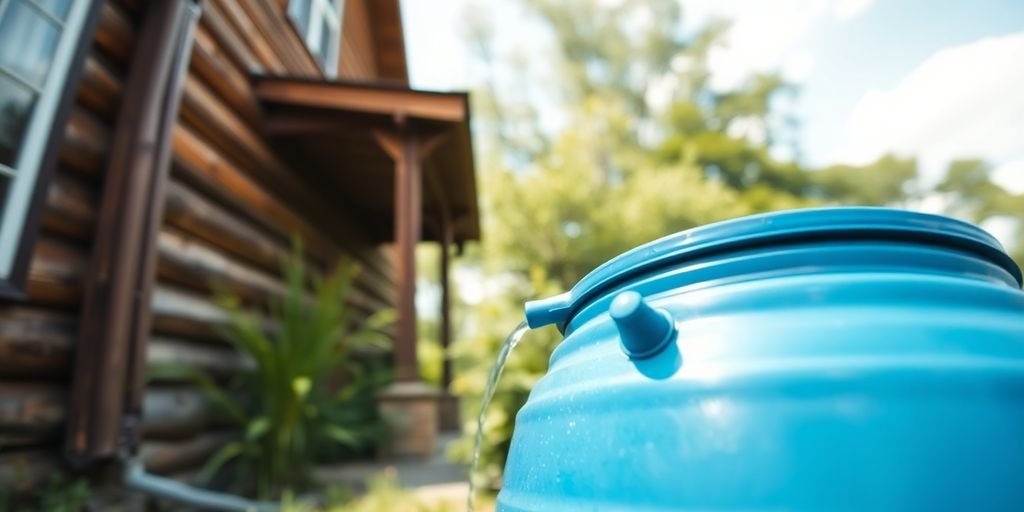
Okay, so you’ve got your water collected, stored, and treated. Now, how do you actually get it to your faucets? This is where the distribution system comes in. It’s all about getting the water from your storage to where you need it, when you need it.
Gravity-Fed Water Systems
The simplest way to distribute water is using gravity. If your storage tank is higher than your house, you’re in luck! Gravity does all the work. You just need to make sure your pipes are properly sized to handle the flow. The higher the tank, the more pressure you’ll have. It’s a pretty reliable system, as long as you don’t mind the potential for lower water pressure, especially if you’re trying to run multiple fixtures at once.
Pump Systems for Pressure
If gravity isn’t on your side, you’ll need a pump. There are a bunch of different types, from submersible pumps that sit inside your rainwater collection tanks to jet pumps that sit outside. Solar-powered pumps are a great option for off-grid living, but you’ll need to factor in the cost of solar panels and batteries. Make sure you get a pump that’s sized correctly for your needs. Too small, and you won’t have enough pressure. Too big, and you’ll waste energy.
Piping and Plumbing Considerations
Choosing the right pipes is important. PVC is a common and affordable option, but it’s not suitable for hot water. PEX is more flexible and can handle both hot and cold water, but it’s a bit more expensive. Copper is another option, but it’s the most expensive and can be prone to corrosion in some water conditions. Also, think about pipe diameter. Bigger pipes mean more flow, but they also cost more. You’ll also want to insulate your pipes, especially in colder climates, to prevent freezing. Here are some things to keep in mind:
- Material: PVC, PEX, Copper
- Diameter: Affects flow rate
- Insulation: Prevents freezing
Proper planning is key. Consider the layout of your house, the location of your fixtures, and the distance from your storage tank. A well-designed plumbing system will ensure that you have reliable water pressure and flow throughout your home.
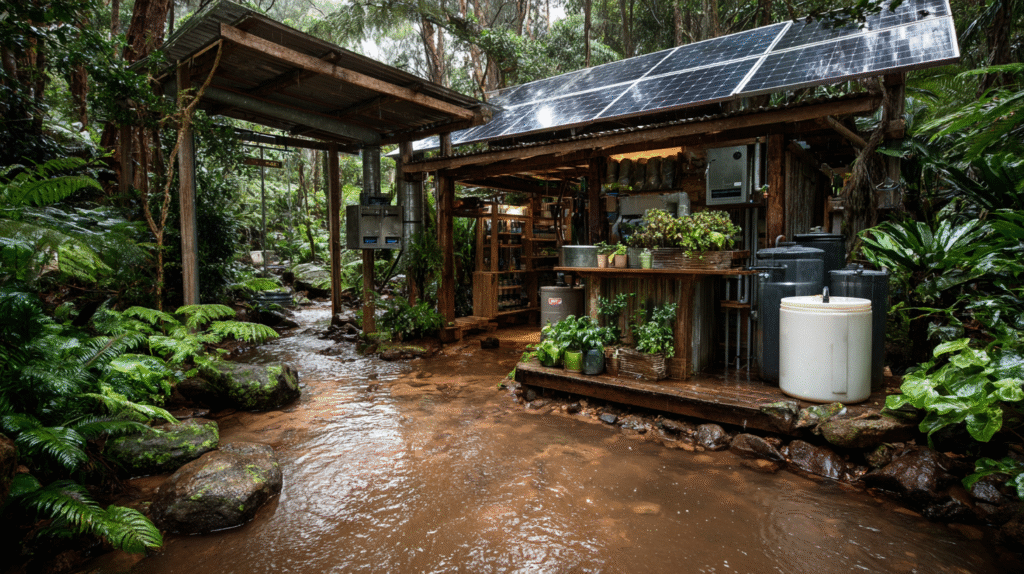
Cost Considerations for Your System
Estimating Initial Setup Costs
Okay, let’s talk money. Setting up an off-grid water system isn’t exactly cheap, but think of it as an investment. The initial costs can vary wildly depending on what you need and what you already have. Are you just collecting rainwater with a simple barrel, or are you drilling a well and installing a fancy filtration system? Big difference! Here’s a rough breakdown of potential costs:
- Water Source: Rainwater harvesting setup ($500-$3,000), well drilling ($5,000-$15,000+).
- Storage: Rain barrels ($50-$200 each), large tanks ($500-$5,000+), cisterns (can be very expensive, depending on size and material).
- Filtration/Purification: Simple filters ($50-$200), UV disinfection ($200-$500), whole-house systems ($500-$2,000+).
- Pumps: If you need them, small pumps ($100-$300), larger pressure pumps ($300-$1,000+).
- Piping and Plumbing: Varies greatly depending on the size of your house and the complexity of the system.
Long-Term Savings and Value
Alright, so you’ve seen the initial costs, and maybe you’re thinking, “Yikes!” But hold on a second. Think about the long game. You’re ditching those monthly water bills, which can really add up over time. Plus, you’re gaining independence and control over your water source. That’s worth something, right? Consider these points:
- No more monthly water bills.
- Increased property value (potentially).
- Reduced reliance on municipal water systems.
- Environmental benefits (less water waste, less energy consumption).
Building your own off-grid water system gives you control over your water source. You know where it comes from, what equipment is used, and what goes into it. This independence is invaluable, especially in areas prone to water shortages or contamination issues. It’s about taking responsibility for your own water supply.
Budgeting for Maintenance
Don’t forget about maintenance! Just like your car or your house, your off-grid water system needs regular check-ups and occasional repairs. Factor these costs into your budget:
- Filter replacements: $20-$100 per year, depending on the type of filter.
- Pump maintenance: $50-$200 per year (if you have a pump).
- Tank cleaning: $100-$300 every few years.
- Unexpected repairs: Set aside a little extra for those “just in case” moments. It’s always good to have a home backup generator for emergencies.
Here’s a simple table to illustrate potential annual maintenance costs:
| Item | Estimated Annual Cost |
|---|---|
| Filter Replacements | $50 |
| Pump Maintenance | $100 |
| Tank Cleaning (Amortized) | $50 |
| Total | $200 |
Ensuring System Reliability
It’s one thing to get your off-grid water system up and running, but it’s another to make sure it stays that way. We’re talking long-term reliability here, folks. No one wants to be caught short when the well runs dry or the rain just won’t come. Let’s look at some ways to keep your water flowing.
Designing for Drought Conditions
Okay, let’s face it: droughts happen. And when they do, your rainwater collection system might not be so helpful. That’s why you need to think ahead. Here’s what I’d suggest:
- Calculate your minimum water needs. Figure out the absolute least amount of water you need to survive. This isn’t about showers; it’s about drinking and basic hygiene.
- Size your storage accordingly. Make sure your tanks can hold enough water to get you through an extended dry spell. Err on the side of caution here.
- Consider multiple sources. If you’re relying solely on rainwater, think about adding a well or spring as a backup. Well water can be a lifesaver when the rain stops.
Regular Maintenance and Inspections
Think of your water system like your car: it needs regular check-ups to run smoothly. Here’s a simple maintenance checklist:
- Inspect your tanks regularly. Look for cracks, leaks, or any signs of damage. Repair them ASAP.
- Clean your filters. Dirty filters reduce water flow and can compromise water quality. Follow the manufacturer’s instructions for cleaning or replacing them.
- Check your pump. Make sure it’s running efficiently and isn’t making any strange noises. A failing pump can leave you high and dry.
- Test your water quality. Even with a good filtration system, it’s a good idea to test your water periodically to make sure it’s safe to drink. You can buy test kits online or hire a professional.
Backup Water Supply Options
Even with the best planning, things can still go wrong. That’s why it’s smart to have a backup plan. Having a backup water supply can be a game changer. Here are a few ideas:
- Store bottled water. Keep a supply of commercially bottled water on hand for emergencies. It’s easy and reliable.
- Invest in a portable water filter. These filters can purify water from almost any source, including streams and ponds. They’re great for short-term emergencies.
- Establish a relationship with a local water source. If you have a neighbor with a well or a nearby spring, see if you can arrange to get water from them in an emergency. Just make sure the water is safe to drink.
Planning for the worst-case scenario is not being pessimistic; it’s being prepared. By taking these steps, you can ensure that your off-grid water system remains reliable, even when faced with unexpected challenges.
Wrapping Up Your Off-Grid Water Journey
So, there you have it. Building your own off-grid rainwater system is a pretty big step toward living more independently. It’s not just about having water; it’s about being smart with resources and doing your part for the planet. You’ve got to think about where your water comes from, how you’ll keep it clean, and where you’ll put it all. With some good planning, your own rainwater setup can give you a steady, safe water supply for everything you need around the house. It’s a solid move for anyone looking to be a bit more self-sufficient.
Frequently Asked Questions
What is an off-grid water system?
An off-grid water system helps you get, clean, and use water without needing city water pipes. It’s about being self-sufficient, using sources like rain or wells, and making sure that water is safe for your home.
What’s the most reliable off-grid water source?
The most reliable water source often depends on where you live. For many, a drilled well is very dependable because it taps into underground water that’s usually there all year. Rainwater collection is great too, especially in places with lots of rain, but it might not be enough on its own during dry spells.
How much does an off-grid water system cost?
The cost can change a lot based on what you need and where you are. A basic setup for collecting rainwater might be a few thousand dollars. But if you need to drill a well, add pumps, or have a big storage tank, it could cost over ten thousand dollars. It’s smart to plan your budget carefully.
How do you get water pressure in an off-grid system?
You can create water pressure in an off-grid system in a few ways. A simple method is using gravity: place your water tank higher than your house, and gravity will push the water down. For stronger pressure, you’ll need a pump, which usually runs on electricity from solar panels or a generator.
Can I drink rainwater collected from my off-grid system?
Yes, absolutely! With the right filters and purification steps, you can make collected rainwater safe to drink. You’ll need to remove dirt and other bits, then kill any germs. Many off-grid homes use rainwater as their main drinking water source.
How much water do I need for an off-grid home?
The amount of water you need depends on how many people are in your home, how you use water (like for showers, laundry, or gardening), and your lifestyle. A good rule of thumb is to plan for at least 50 gallons per person per day to cover all household needs.

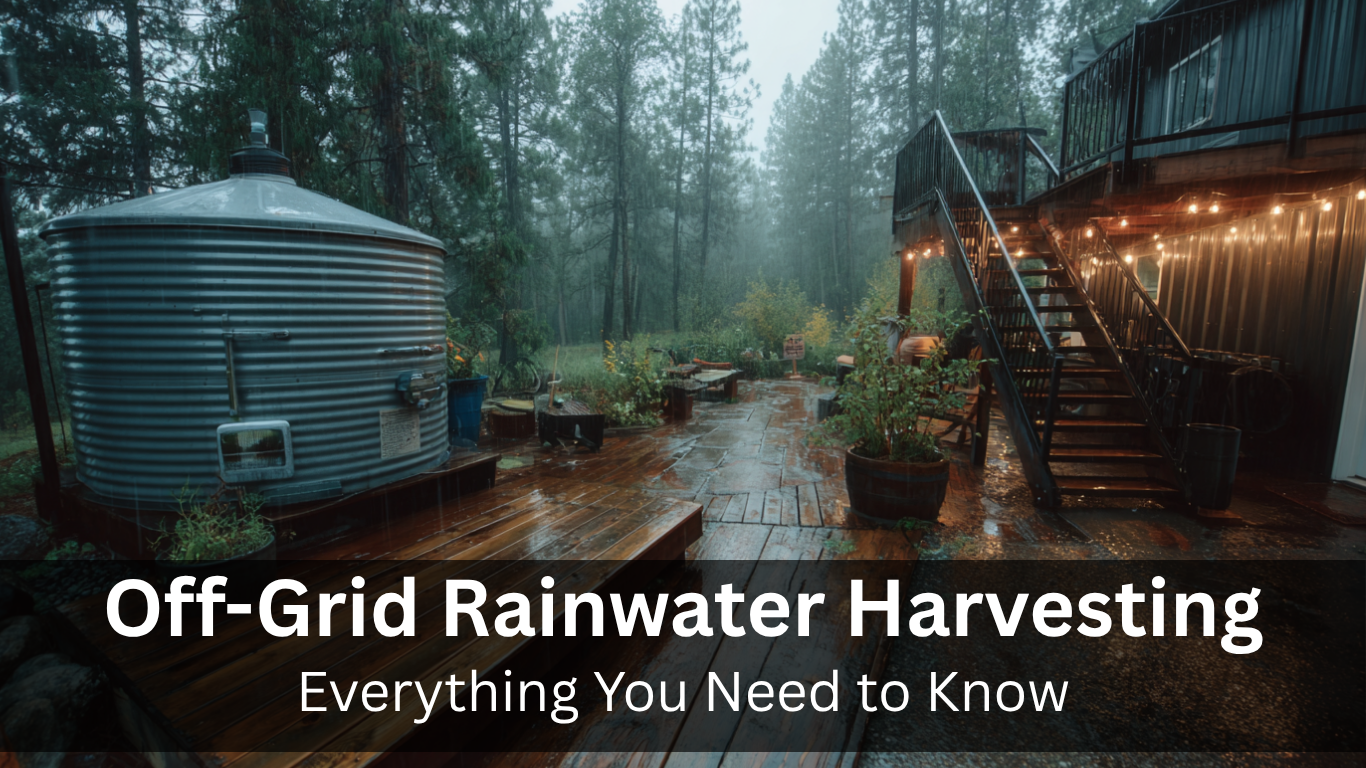

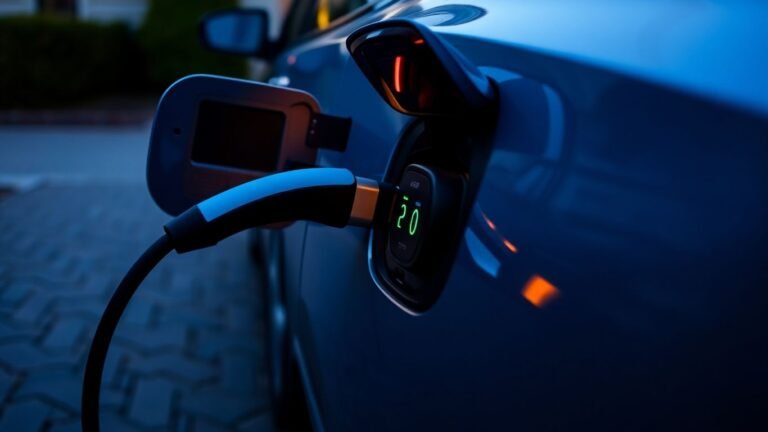

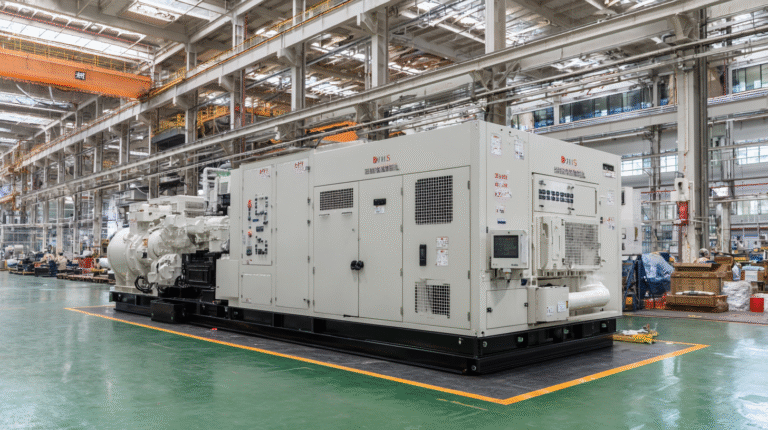
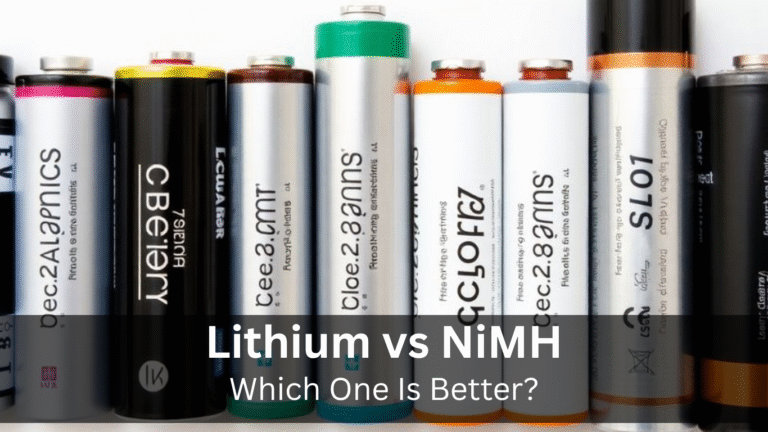
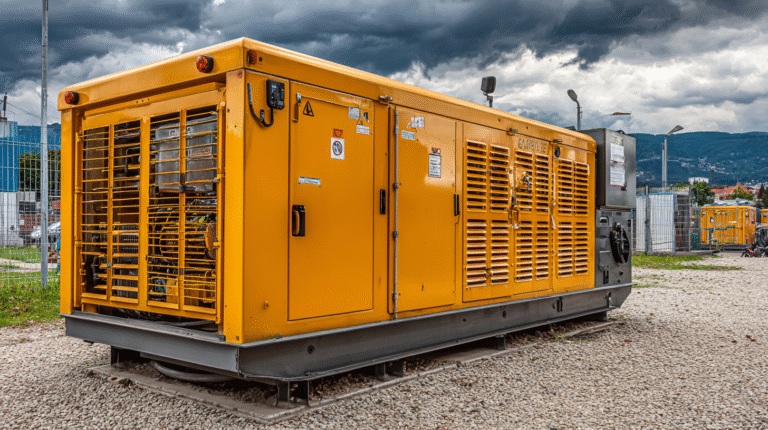

Share your favorite blog post in the comments below!
It’s clear that you are passionate about making a positive impact and your blog is a testament to that Thank you for all that you do